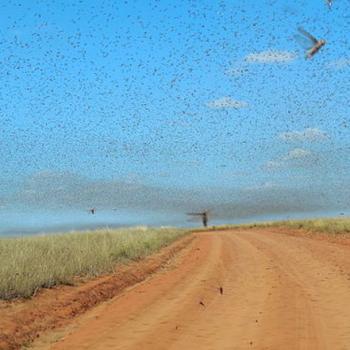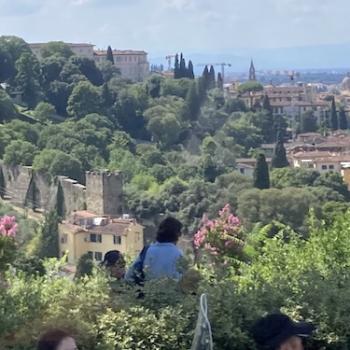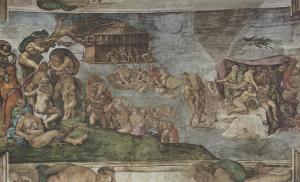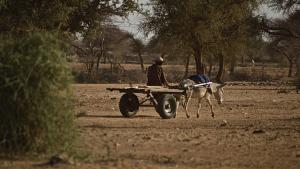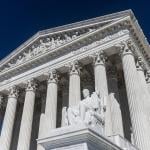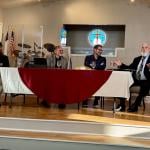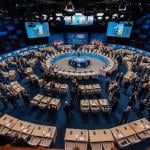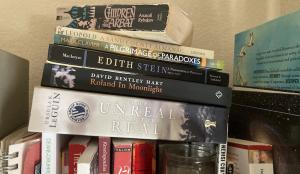
Now and then I post annotated bibliographies of the reading I’ve doing lately. Here are the books I’ve spent most of my time with in the last few months.
Fiction
Children of the Arbat, by Anatoli Rybakov
I can’t remember where I first heard of this book, but its publication was a major event of the Gorbachev era during the Soviet Union’s twilight. Partly autobiographical, it follows a compelling cast of young adults from Moscow (Arbat Street) as they choose—or are compelled toward—ways of navigating the rising aggression of Stalin’s regime in the 1930s. It features some of the most courageous fiction I’ve read, including long sections inside the dictator’s thought world. It’s a wonderful example of what Peruvian writer Mario Vargas Llosa said about historical fiction. History books can relate the dates and events, but only fiction can tell us what it felt like to live through them.
“The Shobies’ Story,” by Ursula K. Leguin
The only other fiction I’ve been reading are Leguin’s space stories. This one is my favorite so far. It tells of a crew who will be the first humans to experience a new kind of near-instantaneous long-distance (like, hundreds or thousands of light years) travel. The inventors keep telling the crew that it’s imperative that they grasp the principles, and they finally discover why. It turns out that human consciousness alters the success of the journey. And as none of them really understands the physics, the results are wild and incoherent.
Ecology and History
Origins: A Genetic History of the Americas, by Jennifer Raff
A well-written introduction to the way that gene studies are reshaping ancient American history, by a nerdy lab-coat wearing sceintist. I loved it! She walks the Native mounds of Ohio and explores underwater caves in Mexico. The drama of Clovis points —stones flaked into blades and tools 12,000 year ago— had me on the edge of my airplane seat! A few big takeaways:
- There was a land bridge, but it was more like a land continent, nearly the size of Alaska. Siberian homo sapiens crossed back and forth regularly until it became the Bering Sea.
- An ice wall way more impressive than the one they protect at Winterfell covered what is now southern Canada and Northern U.S. for millennia. Once a passage melted, humans and other fauna could spread across the Americas. (Though some may have already been there!)
- The brilliant, cultured people who built mounds, villages, and carved entire cities into cliff are not extinct, regardless of what Andrew Jackson and generations of white historians thought. They are the ancestors of today’s Native Peoples.
- Humans were in the Americas at least 25,000 years ago. And perhaps long before that.
A Sand County Almanac, by Aldo Leopold
“There are some who can live without wild things, and some who cannot. These essays are the delights and dilemmas of one who cannot.” What’s not to love? A young outdoorsy boy in the early 1900s, who loves to hunt and fish, starts paying attention to the land, the animals, and the way Native Peoples cared for them. He buys an overcropped farm in Wisconsin, and starts watching and listening. What pine trees want to grow here? Where does the skunk path lead? What missing predators does the land still suffer from? What are the cranes talking about? What do we owe to the places we love?
Theology and Philosophy
The Spirit of Early Christian Thought: Seeking the Face of God, by Robert Louis Wilken
What a gem this book is. Wilken is the theologian that I did not take a class from at the University of Virginia, one of my few regrets from my doctoral program. This book is a companion to a much earlier one on how the ancient Romans saw the first Christians. This time he writes about how the Christians saw themselves. What did they think they were doing, writing sermons and poems and liturgies? The Incarnation and the Trinity serve as the thought-center of a new culture, Wilken argues. It’s a culture that reshapes the ancient notion of happiness into one that begins in repentance, carries on through the imitation Christi, and ends in intimate fellowship with the God of Israel. This is a book that will redefine your understanding of Christian faith and life.
Roland in Moonlight, by David Bentley Hart
Hilarious, strange, and deeply provoking. This is a novel, a memoir, and a book of religious philosophy all at once. I’m trying to imagine the conversation between Hart and the publishers when he first pitched it. I won’t give too much away, because you need to experience it for yourself. But here are the salient plot points. David and his family get a dog. David develops a mysterious illness, and this is part of the motivation for several familial relocations. The dog begins to talk to David. Not just talk, but talk in the way that a reincarnated Buddha (which Roland may in fact be) would talk. “The structure of nature itself is already mind-like, and is so precisely because the order of causes proceeds downward, so to speak, from mind, from nous.” That’s what he tells David one night. Meanwhile the dog begins editing the collected poems of David’s deceased eclectic uncle, who had a complex relationship to Christianity and pagan practices. Oh, and Roland contracts “a small theatrical troupe from Staunton” to put on a production of one of that uncle’s pieces in the forest, as a surprise for David. Also, Roland can see fairies, and is sad to learn that humans (or bonobos—he keeps forgetting what kind of ape David is) cannot.
Edith Stein: A Philosophical Prologue (1913-1922), by Alisdair MacIntyre
This one has been on my shelf since it was first published in 17 years ago (!), and I’m glad I finally gave it my attention. Stein is the Jewish philosopher who became Saint Teresa Benedicta of the Cross when she entered the Carmelite order in Germany in 1933. She was eventually murdered among the throngs in Auschwitz, once Hitler decided that ethnically Jewish converts would no longer be spared. MacIntyre—among our greatest living philosophers—focuses on her early life, especially her philosophical training under the great phenomenologist Edmund Husserl. She was a star student and also saved his career by editing his Ideas, Vol 2, from loose leaf sheets scattered around his office into a coherent treatise. Despite this, he turned his back on her when she applied for teaching posts, writing in his “recommendations” for her that women didn’t belong in professorships. MacIntyre takes us into the woodgrain of her early thought, and shows us some of the remarkable ways that this young scholar was developing a concept of time and embodiment that outline the beginnings of a lasting critique of Husserl’s philosophy.
Pilgrimage of Paradoxes: A Backpacker’s Encounter with God and Nature, by Mark Clavier
Among the best of the ecotheology texts I’ve read. The author spends a weekend on his beloved Cadair Idris of west Wales. He listens deeply, and lets the places and creatures play games with his theologically informed imagination. How can the eternity of stone and sky coexist with the “thick time” of places with long memories? How can a place be so silent, and yet so filled with stories, myths, and songs? Why is it that I can feel awe at something so ordinary as a bit of rock? Paradoxes such as these lead him to deep theological insights. God is beyond change, and yet also deeply involved in the fluctuations of time. There is a wordlessness that comes at the end of our contrast of silence and speech. The most commonplace of things is a window onto the transcendent God. These are among the many things Clavier passes along to us while he walks the mountain.
That’s all for now. Happy reading to all.
–Tony


